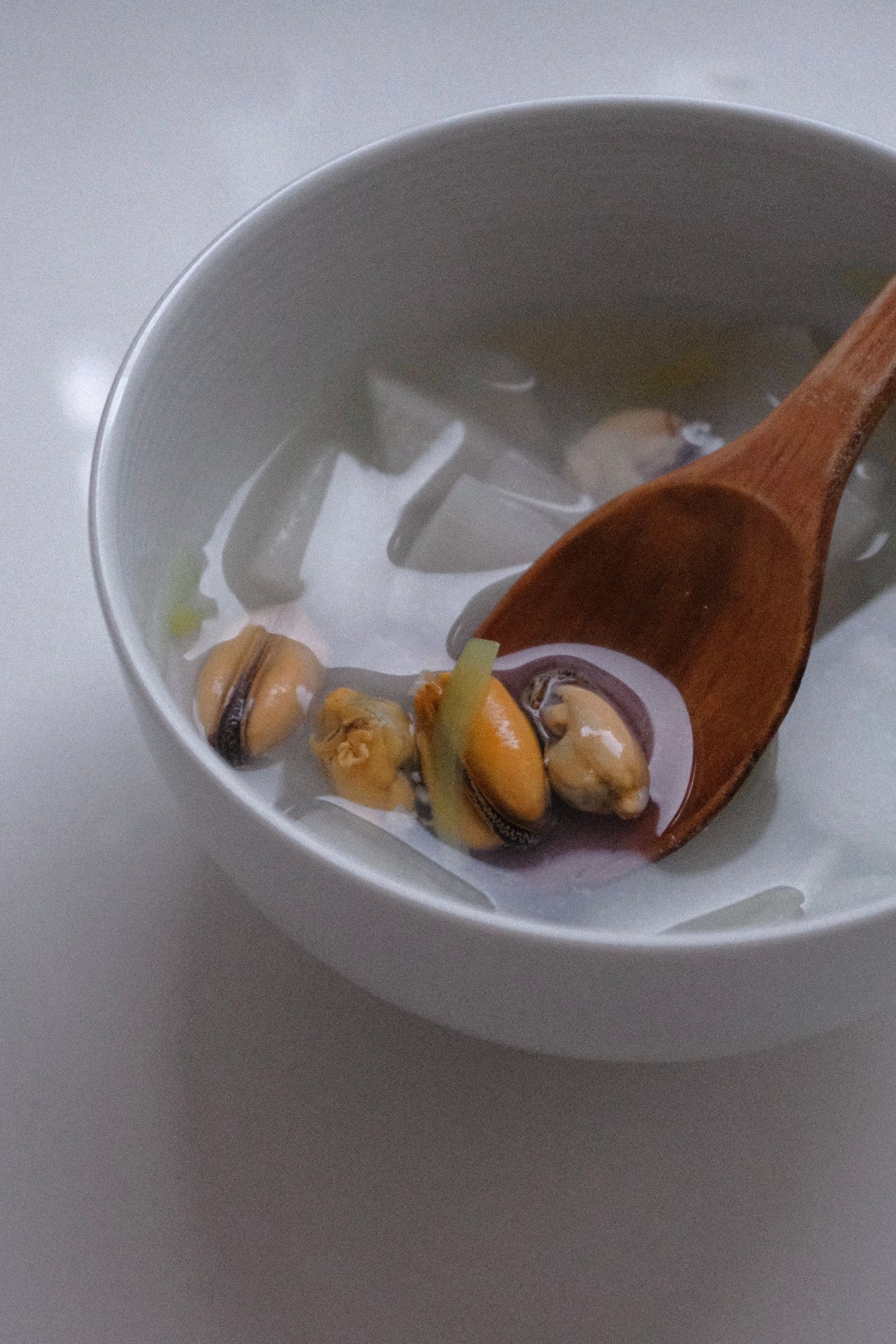When the air calms down, and the cold wind blows, I'm reminded of hot radish soup. I imagine the soup of mature radish, rice, and kimchi on the dinner table. And it leads to a series of mental pictures: what the weather would be like in Korea these days, the scene of a familiar street, and people going somewhere thinking of radish soup just like me.
Freshly harvested radish at the brink of Winter is the best for radish soup. In Korean fall and winter, the weather is dry and cold. The radish endures this weather to become firm and sweet and to preserve its nutritional qualities. So when you put the radish in soup, it doesn't become mushy and still has a good texture with rich flavor.
Living outside Korea, I haven't found the exact replacement for Korean radish yet. Instead, I use different kinds of but similar radish in many ways. By "similar," I mean they're similar in some ways but quite different in other ways. They have their own characteristics.
I usually use Japanese radish, purple turnip, French radish, and black radish.
Japanese radish is watery and less firm. It's good to make Musaengchae. Shred the radish and lightly brine it. After draining water a little, season it with vinegar and sugar. I also like to pickle the radish and later either season it or use it to make Kimbap. However, since Japanese radish is watery and not firm, kimchi made from it can be non crunchy and bland in flavor.
The purple turnip is less firm, less watery, and has a spicy kick. Whereas Japanese radish looks similar to Korean radish, the purple turnip tastes more similar to Korean radish. Good quality turnip kimchi tastes delicious. However, it’s less firm than Korean radish in fall and winter. If their condition is not good, they become mushy very quickly. And when making kimchi, people grind some apples and throw them in the kimchi. However, in this case, it accelerates the fermentation too fast, and the purple turnip will become mushy, too. Besides kimchi, it also fits well in soup, braising, seasoning, and Jangajji (Korean style pickling in soy sauce). Once it’s cooked or pickled, some of its strong flavors disappear, rendering a balance flavor profile. The stem and the leaves of young turnips are good as well. They can be used in kimchi. They can also be used in soup or some side dishes after boiling or drying.
French radish has the taste of spring. It’s small, and the texture is not firm, but it’s refreshing with its subtle heat. It doesn’t have a rich flavor but is enjoyable when made as radish water kimchi. The stem and the leaves can be used in soup or pickles.
Black radish is less sweet, less watery, and has a strong spicy kick. When used a little bit in kimchi, as it’s fermented, it makes a refreshing taste with pleasant kicks. Because of its strong flavor, I haven’t used it in other dishes.
When cooking Korean food with those radishes, they make subtle differences. Not too strongly, they reveal their characters. And the subtle differences are refreshing.
But it’s not that I always get good outcomes. Sometimes it turns out a little weird. With unfamiliar ingredients, I need more trials and errors. Through them, I understand their characteristics, and the taste gets better.
At the end of this post, I’m getting new questions. One leads to another, and so on. What kind of new ingredient will I discover? What food will I cook with them? What memory will I make out of them? Like I’m on a journey of looking for the replacement of Korean radish, in the future in some other place will I miss and look for replacements of these radishes?
1. Prepare ingredients
2. Boil mussels slightly
3. Cook the soup
* note
